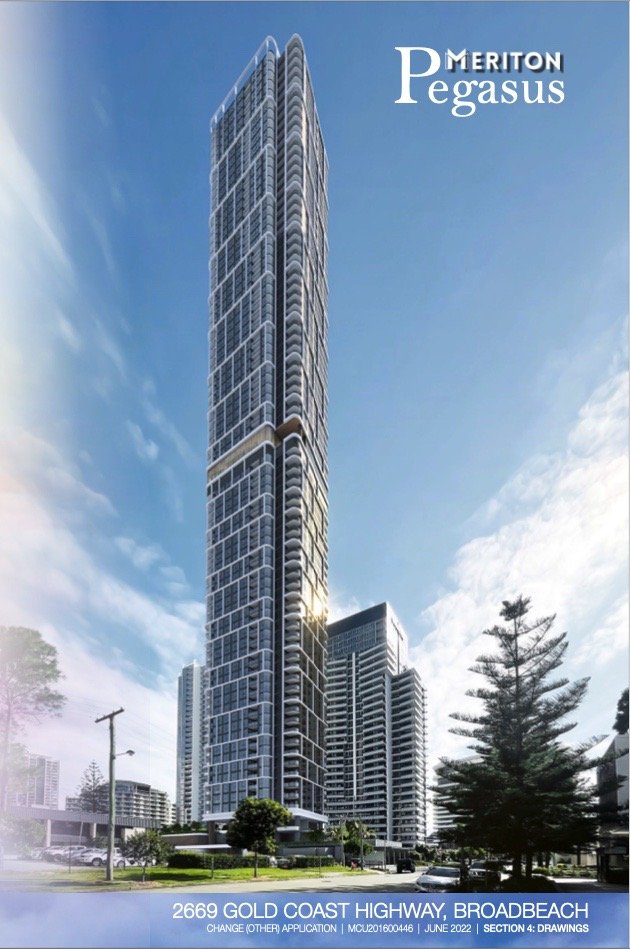A city plan that ignores citizens?
Community groups from Rainbow Bay to Runaway Bay feel disempowered. It has become abundantly evident that Gold Coast Council’s efforts to supercharge development potential and speed up approval processes through the 2016 City Plan, effectively enabled developer interests to determine community and environmental issues.
In that same year, 2016, the Queensland Planning Act (The Act) also came into force mandating some subtle but significant changes to deregulate the Queensland planning system. It required councils reviewing local planning schemes to flip prescriptive constraints into performance criteria, and to speed up development assessment processes.
Since then, the Gold Coast mayor and councillors have commonly relied on State Government directives to deflect responsibility for controversial planning decisions.
Hierarchy of assessment benchmarks
A look at successive versions of Gold Coast City Plan shows updates made to align with The Act. Between Version 3 (May 2016) and Version 4 (Jul 2017), a switch was made to the implementation clause which sets the hierarchy of assessment criteria/benchmarks. You need to read the versions side by side (shown here) to see and appreciate the significance of this change. Specifically, 1(b) says the strategic framework prevails over all other components to the extent of the inconsistency for impact assessment (only).
Why is this seemingly subtle change significant?
Conventionally, planning schemes are made to cascade like a waterfall from high-level, broad strategic goals down to narrower, specific provisions. Assessment usually begins at the bottom and works up. If a proposal, or an aspect of a proposal, does not fully satisfy standard low-order code provisions, the assessor looks up to the next level for guidance. They need to evaluate if non-compliance is justifiable. If they can be satisfied that departure from the standard is still consistent with higher order objectives, it may be approved, with or without conditions. What this 2016 switch in the hierarchy of assessment did is intercept orthodox process.
A full explanation would require diagrams and lengthy discussion. For the present purpose it’s enough to understand the following.
Categories of development under the Act are:
Prohibited Development (no DA accepted)
Impact Assessment
Code Assessment, and
Accepted Development (no DA required)
According to City Plan Part 1.4 Hierarchy of assessment benchmarks it is only with Impact Assessment that assessors can look to the strategic framework for guidance if a proposal does not comply with relevant zone and development codes.
For Code Assessment, only the relevant codes can be applied. The scope of matters that can be considered cannot be widened, even if a proposal fails to comply with one, some or all of the code provisions.
Along with these settings, the masterstroke for speeding up development approvals was to configure the tables of assessment in Part 5 so that most applications are Code Assessable.
Opportunities and threats of code assessment
Critically, Code Assessment avoids requirements for public notice, and precludes third party objection and appeal rights. It also takes away the necessity and ability for proposals to be considered with regard to the strategic framework and State Planning Policies (SPPs).
Theoretically, and by inherent assertion, since zone and development codes were made to align with, encapsulate and particularise higher level components, Code Assessable applications are well within the bounds of and consistent with with the strategic framework and SPPs. If an application satisfies the codified performance outcomes, most land use and development matters can be accepted to accord with reasonable community expectations. However, in practice, codes have become treated like checklists. Matters that govern neighbourhood impacts seem to be taken with a grain of salt. The council grants excessive and routine relaxation of code provisions, letting developers get away with whatever they wish to do, without any assessment of community opinion or impact.
Some development approvals, assessed against the Highrise Accommodation Design Code, have been ludicrous. Take for example, the 757sqm site at 2 Charles Avenue Broadbeach for which the council approved a 54 storey glass-faced tower with zero boundary setbacks and density of 1 bedroom/3.9sqm. Fortunately, in this instance, the developers baulked at this proposal and opted to proceed with a 28 storey building, despite holding an approved DA for a building twice as tall.
Code Assessment is breeding buildings with bulky podiums, inadequate landscaping, ugly and unsafe vehicle entryways, unreasonable overshadowing and overlooking of neighbouring properties. And there is nothing affected neighbours can do about it. This is an absurd position for citizens of a democratic state to find themselves in. The fact that it is happening to one of the most naturally beautiful and amenable places to live on Earth, is scandalous.
Minor change loophole
But wait, there’s more! Code Assessment enables the council to approve, without public notice, subsequent ‘minor change’ applications. In the unlimited height area (HX) from Broadbeach to Main Beach there’s a constant stream of minor change applications, where developers are coming back for more. In Broadbeach recently, approval was granted for a minor change from 64 to 79 storeys for a third tower in the Pegasus garden of the Meriton Suites. Surrounding residents learnt about this in the newspaper, if they read it. There was no obligation for the applicant or council to provide any public notice whatsoever of this substantial change.
In areas where height limits apply, a trend has also emerged whereby developers gain approval through Code Assessment, then return with Minor Change applications to exceed the height limit which would have initially triggered Impact Assessment, public notification and the right for neighbours to object and appeal. In Rainbow Bay, new residential towers (Flow, Awaken, Esprit, Rockpool, Holm and Komune) have all been granted uplifts ranging from 1.0-10.5m in this way. Do we really want our laws to enable this kind of development duplicity?
Cumulative impacts
And yet another, less obvious outcome of the switch in the hierarchy of assessment benchmarks is that code assessability strikes out any consideration of cumulative impacts of development. Because each application must be considered on its individual merits, no analysis of incremental, sustained and combined impacts is undertaken.
This came to light recently when Better Broadbeach Association requested information from the council to assist with preparing a Green Space Strategy for the suburb. We reasonably requested 3D digital imagery to help us imagine the future with existing and approved building volumes. The City Planning Branch provided a database of 195 DAs that have been approved in Broadbeach from 2011-2022, but to convert this into a visual representation showing existing and approved towers would be an arduous task. Some cities have such information easily and publicly available, but our council’s spatial analyst indicated they don’t have the resources to create and maintain a live 3D model of the city.
A cynic might wonder if the planning authorities prefer to not know how the future looks. As they pump out approvals for developments that exceed the City Plan settings without concern about the cumulative impact on the shape of the city, are they comfortable with the delusion that everything will be OK?
Bringing back balance
Community Alliance members and others have been campaigning for years to bring back some degree of balance and fairness to the situation. Initially, we called for faithful adherence to the design code, but that fell on deaf ears. Next, we argued for introduction of additional Impact Assessment triggers – density, site cover, setbacks, or a 10% margin of excess. I wrote an essay titled ‘Trojan Horses, Red Herrings and Green Wedges’, calling for reintroduction of mandatory landscaped open space at ground level as a way to at least get some greenery and spacing between buildings.
Since approvals by Code Assessment routinely exceed acceptable outcomes, it’s rational to conclude that the planning assessment process is flawed and excessive proposals should be impact assessable. Yet I have never heard anyone suggest that all development should be made impact assessable. There’s a definite sense in this city that Gold Coasters typically embrace change and eschew unnecessary red tape. Few would begrudge the benefits of certainty, expediency and cost savings that Code Assessment gives to developers, but it’s not delivering outcomes that resemble what the City Plan’s strategic framework and code objectives espouse.
The council is unlikely to ever acknowledge that misimplementation of Code Assessment is causing adverse impacts on third parties across many parts of the city. Nor has it been willing to open up community conversations about introducing any type of impact assessment trigger. Through the protracted process of City Plan Amendments 2 & 3, recommendations to stipulate minimum separation distance between towers, minimum frontage length and 10% deep planting have been supported. Yet even these small concessions remain pending endorsement by the State Planning Minister.




